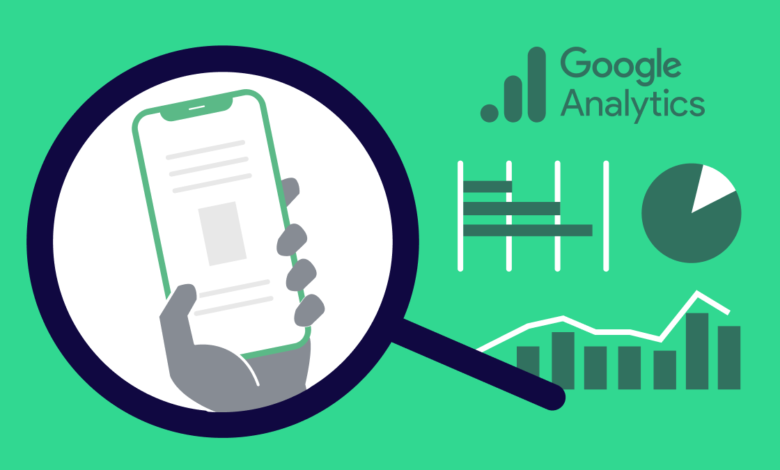8 Ways to Use Google Analytics to Track and ImproveYour Online Performance

Introduction
In the digital age, data is a valuable asset for businesses seeking to enhance their online presence and improve performance. Google Analytics, a powerful and widely-used web analytics tool, empowers website owners and marketers to access essential insights about their audience and track website performance effectively.
In this article, we will explore five valuable ways to use Google Analytics to track and improve your online endeavors.
1. Measure Website Traffic and User Behavior
Google Analytics offers a wealth of data to help you gauge your website’s traffic and user behavior. You can track metrics like the number of visitors, their geographic location, and the devices they use to access your site. Understanding the sources of your traffic, such as organic search, social media, or paid advertising, enables you to optimize your marketing efforts and allocate resources wisely.
By monitoring user behavior through metrics like bounce rate, time on page, and the most visited pages, you can identify areas that need improvement. For example, a high bounce rate on a particular page may indicate that the content is not engaging or relevant to visitors. Armed with this data, you can modify content and design elements to enhance user experience and ultimately boost conversions.
2. Analyze Conversion Funnels
A conversion funnel represents the path that visitors take on your website leading to a desired action, such as completing a purchase or signing up for a newsletter. Google Analytics allows you to set up and track conversion funnels, providing insights into the steps users take before converting.
By analyzing conversion funnels, you can pinpoint areas where potential customers drop off and optimize these critical stages. For instance, if you notice a significant drop-off during the checkout process, you can streamline the process, improve payment options, or address any concerns that may be hindering conversions. This data-driven approach can significantly increase your website’s conversion rate and boost your business’s bottom line.
3. Track E-commerce Performance
If you run an online store, Google Analytics can be a game-changer for monitoring e-commerce performance. By integrating Google Analytics with your e-commerce platform, you gain access to valuable data on sales, revenue, and product performance.
With e-commerce tracking enabled, you can identify which products are the most popular, the average order value, and the conversion rate of different product categories. Armed with this information, you can make informed decisions on product offerings, pricing strategies, and promotional campaigns.
4. Utilize A/B Testing
A/B testing, also known as split testing, is a technique used to compare two versions of a web page to determine which one performs better. Google Analytics provides a simple way to implement A/B tests by offering tools like Google Optimize.
You can use A/B testing to compare variations of landing pages, call-to-action buttons, headlines, and other website elements. By continually testing and refining these elements, you can optimize your website for better performance, higher conversions, and improved user engagement.
5. Monitor Site Speed and Mobile Performance
In today’s fast-paced digital world, website speed and mobile responsiveness are critical factors that significantly impact user experience and search engine rankings. Google Analytics offers data on page load times and mobile performance, allowing you to identify potential bottlenecks and areas for improvement.
A slow-loading website can lead to higher bounce rates and lower rankings in search engine results. By regularly monitoring site speed and addressing any issues, you can ensure that your website provides a seamless experience for visitors across all devices, thus boosting user satisfaction and engagement.
6. Monitor Social Media Impact with Google Analytics
Social media has become a powerful platform for businesses to connect with their target audience, build brand awareness, and drive engagement. However, measuring the impact of your social media efforts can be challenging without the right tools and insights. Google Analytics provides valuable data and tracking capabilities to monitor the effectiveness of your social media strategies.
7. Set and Track Key Performance Indicators (KPIs)
Key Performance Indicators (KPIs) are essential metrics that enable businesses to measure the success of their online strategies and track progress toward their goals. In the digital landscape, setting and tracking KPIs is crucial for making data-driven decisions and optimizing performance. Google Analytics provides powerful tools to define and monitor KPIs, offering valuable insights into various aspects of your online presence.
8. Track and Reduce Bounce Rates Effectively
Bounce rates play a crucial role in understanding how visitors interact with your website. A high bounce rate indicates that visitors leave your site after viewing only one page without taking any further action. Reducing bounce rates is essential for enhancing user engagement, increasing conversions, and improving overall online performance.
You can take effective strategies to track and reduce bounce rates using Google Analytics, enabling you to create a more compelling and engaging online experience for your visitors.
Conclusion
Google Analytics is a powerful tool that empowers businesses and website owners with valuable insights to track performance, identify areas for improvement, and make data-driven decisions. By incorporating regular SEO tool reviews into your website’s performance analysis, you can optimize your SEO strategies effectively and achieve better results. Google Analytics serves as an invaluable tool in this process, offering essential insights that empower you to make informed decisions about your SEO efforts. By leveraging the five methods discussed in this article, you can harness the full potential of Google Analytics to optimize your online presence, enhance user experience, and drive better results for your business. Remember, continuous monitoring, analysis, and optimization are the keys to success in the dynamic and ever-evolving online landscape.